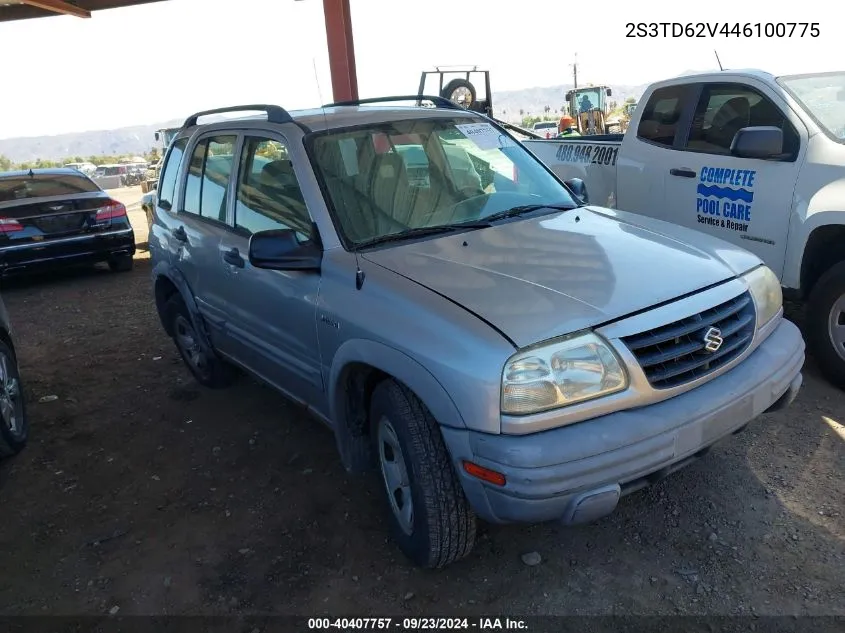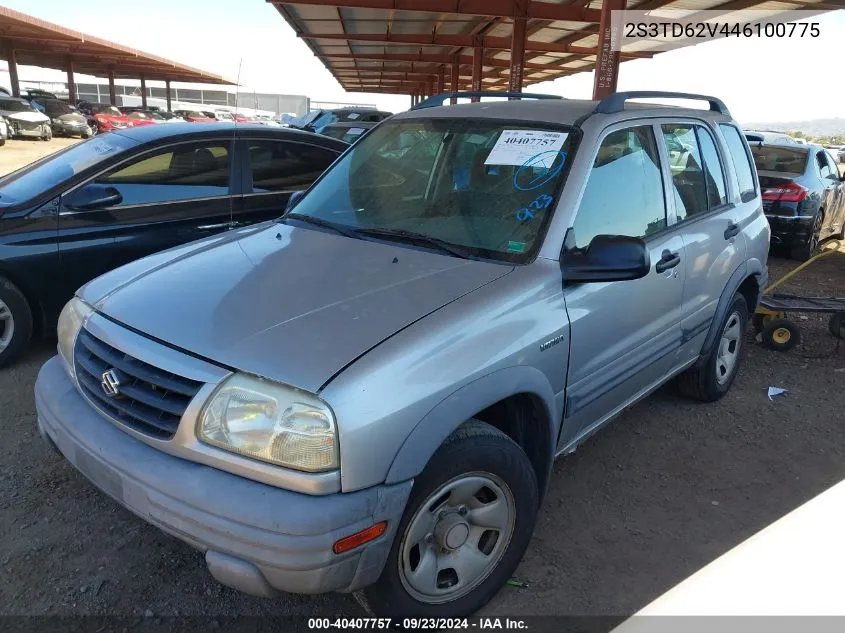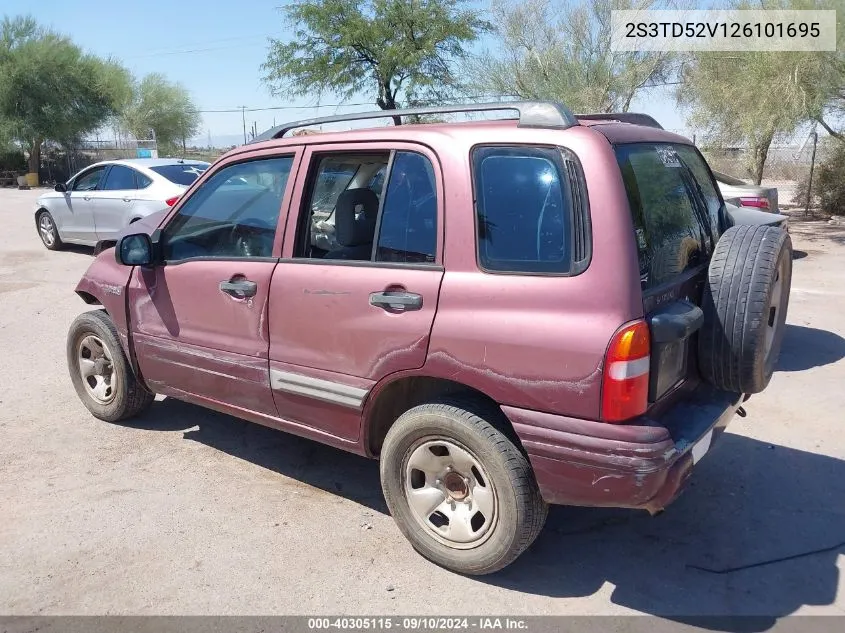Suzuki Vitara (10)
1999 Suzuki Vitara Jx/Jx+
2002 Suzuki Vitara Jls
2004 Suzuki Vitara V6 Lx
2002 Suzuki Vitara Jlx
2003 Suzuki Vitara
2002 Suzuki Vitara Jlx
The Suzuki Vitara is a compact crossover that has become one of the most recognizable models of the Japanese automaker Suzuki. First introduced in 1988, the Vitara quickly gained popularity due to its reliability, cross-country ability, and attractive design. This car has gone through several generations and numerous updates, which has allowed it to remain relevant and popular for decades.
The history of the Suzuki Vitara is full of various modifications and improvements. During the existence of the model, several generations were released, each of which was distinguished by its own features and innovations. The car was offered with various types of engines, transmissions and equipment levels, which made it attractive to a wide range of consumers. Modifications include both basic versions and more sporty and premium trim levels, which allowed Suzuki Vitara to cover different market segments.
The Suzuki Vitara's colour palette is also impressive in its diversity. Over the years of its production, the model was offered in a wide range of colours, including both classic and bright, eye-catching shades. This allowed buyers to choose a car that suited their individual taste and style.
The Suzuki Vitara has been produced in several generations, from the original 1988 model to the modern versions that are still being produced today. Each production period had its own features and improvements, which allowed the car to remain competitive and in demand in the market.
In terms of sales, the Suzuki Vitara has consistently performed well. The model has been sold not only in Japan, but also in international markets, including Europe, North America and Australia. Some versions of the Vitara have been particularly successful due to their fuel efficiency, reliability and affordable price. However, like any model, the Vitara has had its share of problematic versions, which are remembered for their shortcomings or technical problems.
In this article, we will take a detailed look at all aspects of the Suzuki Vitara: from history and modifications to sales statistics and analysis of the most successful and problematic versions. This will allow you to get a complete picture of the development and evolution of one of the most famous Suzuki crossovers.
History of the Suzuki Vitara Model: Evolution and Achievements
The Suzuki Vitara first hit the market in 1988 and quickly gained popularity thanks to its versatile character and excellent off-road capabilities. This compact SUV became a symbol of reliability and practicality, attracting the attention of both city dwellers and outdoor enthusiasts.
Over the years, the Suzuki Vitara has undergone many changes, adapting to the demands of the times and customer preferences. The model has received updated versions with improved performance and an expanded range of engines, which allowed it to remain competitive in the SUV market.
Evolution of the Suzuki Vitara
The main stages of development of Suzuki Vitara can be identified as follows:
- First generation (1988-1998) : Debuted as a compact SUV with all-wheel drive and petrol engines from 1.3 to 2.0 liters. The model was successful due to its cross-country ability and affordable price.
- Second generation (1998-2005) : The updated version received a more modern design, improved suspension and more powerful engines. Diesel options and an automatic transmission were added.
- Third generation (2005-2015) : Significant changes affected both the appearance and technical characteristics. The SUV became more comfortable and safe, and also received new technologies, such as a stabilization system.
- Fourth generation (since 2015) : The modern version of Vitara has become even more stylish and economical. Turbocharged engines and hybrid technologies are used, which makes the model attractive to a wide range of buyers.
Throughout its history, the Suzuki Vitara has been available in a variety of colours, including classic and exclusive shades, allowing buyers to choose a car to suit their taste.
The number of Suzuki Vitara cars sold worldwide is estimated in millions. The most successful models are the third and fourth generations, which managed to win recognition due to the combination of modern technologies, safety and comfort. However, as with any model, there were also problematic versions, among which there were problems with body corrosion and electronic malfunctions, especially in early models.
Overall, Suzuki Vitara remains one of the most popular models in the compact SUV segment, continuing to please its owners with reliability and a high level of comfort.
Vitara Modifications: Variety and Technical Specifications
Since its debut in 1988, the Suzuki Vitara has gained popularity thanks to its all-terrain capabilities and versatility. Over the decades, the model has undergone several significant updates and upgrades, which has allowed it to remain relevant in the market and attract a wide range of car enthusiasts.
In different generations, Suzuki Vitara offered various modifications, differing both externally and technically. Body variants, engines, drive systems and additional options - all this made Vitara attractive to different categories of buyers, from city driving enthusiasts to off-road enthusiasts.
Main Modifications and Their Technical Characteristics
Below is a list of key modifications of the Suzuki Vitara, which stand out most in the history of the model:
- First generation (1988-1998)
- Body: 3-door and 5-door SUV
- Engines: 1.6-liter petrol, 1.9-liter diesel
- Drive: rear or all-wheel drive
- Second generation (1998-2005)
- Body: 3-door and 5-door SUV
- Engines: 2.0-liter petrol, 2.0-liter turbodiesel
- Drive: all-wheel drive
- Third generation (2005-2015)
- Body: 3-door and 5-door SUV
- Engines: from 1.6-liter to 3.2-liter petrol
- Drive: All-wheel drive with AllGrip all-wheel drive system
- Fourth generation (2015 - present)
- Body: 5-door crossover
- Engines: 1.0-liter and 1.4-liter turbo petrol, 1.6-liter diesel
- Drive: front or all-wheel drive AllGrip
The Suzuki Vitara modifications are not only diverse, but also offer various technical solutions to meet the needs of drivers. For example, the AllGrip all-wheel drive system, available in the latest generations, provides optimal traction in all conditions, whether on a city street or off-road.
Along with this, the engines of different generations of Vitara are distinguished by reliability and efficiency, which allows owners to enjoy both dynamic driving and fuel economy. The third and fourth generations are especially distinguished by the use of modern technologies and environmentally friendly engines that meet strict environmental standards.
Vitara Colors and Years of Production
The popular compact SUV, the Suzuki Vitara, first hit the market in 1988. Since then, it has gone through several generations, each with its own unique features and color schemes. The car quickly gained popularity due to its reliability, affordability, and off-road adventure capabilities.
The Vitara color palette has always been diverse, providing buyers with a wide choice. The manufacturer paid special attention to creating bright and memorable shades that would emphasize the dynamic and modern appearance of the car. Below are the key stages and the most popular color solutions of the Suzuki Vitara by year.
Color Solutions by Year
Each generation of Suzuki Vitara was distinguished by its own color schemes, which reflected the trends and tastes of its time.
- 1988-1998: The first generation Vitara offered classic colors such as white, black, silver and red. Bright colors such as bright blue and green became especially popular.
- 1998-2005: The second generation expanded the color palette to include more modern shades, including metallics and pearlescents. The most notable ones were navy blue, gold, and burgundy.
- 2005-2015: The third generation offered even more color options, including two-tone combinations. Orange, mint, and anthracite became popular.
- 2015-present: Current Vitara models offer a wide range of vibrant and stylish colours. Colours such as azure, bright yellow and deep red stand out. In addition, two-tone combinations, where the roof of the car is painted in a contrasting colour, have become a hallmark of this generation.
Thus, Suzuki Vitara throughout its history offered buyers a wide choice of color solutions, which contributed to the popularity of the model among various categories of car owners. Each new release of the car brought with it not only technical improvements, but also new stylish colors that corresponded to the spirit of the times and fashion trends.
Suzuki Sales: Successful and Problematic Models
Throughout its history, the Suzuki Vitara has experienced both periods of significant success and moments when sales left much to be desired. Let's consider which models have become the most popular among consumers and which versions have caused the most complaints and problems.
Most Successful Models
- First generation (1988-1998) : This model was especially popular due to its reliability, compact size and cross-country ability. It won the hearts of buyers all over the world, which was reflected in high sales.
- Third generation (2005-2015) : This version combined modern technology and traditional reliability, which attracted both old and new fans of the brand. The model also received high marks for safety and comfort.
- Fourth generation (2015 - present) : The modern Suzuki Vitara, with improved fuel economy, advanced safety features and stylish design, continues to attract a large number of buyers.
Problematic Models
- Second generation (1998-2005) : Although this model was successful in terms of sales, it received much criticism for problems with the gearbox and electronic systems, which negatively affected its reputation.
- Diesel models : Diesel versions have been plagued with emissions and engine durability issues, leading to increased complaints and lower sales.
To sum it up , we can say that Suzuki Vitara, despite some problematic models, remains one of the most successful and popular series of cars of the company. Constant updating and adaptation to market requirements allow Suzuki to maintain a high level of sales and satisfy the needs of various categories of buyers.




























































